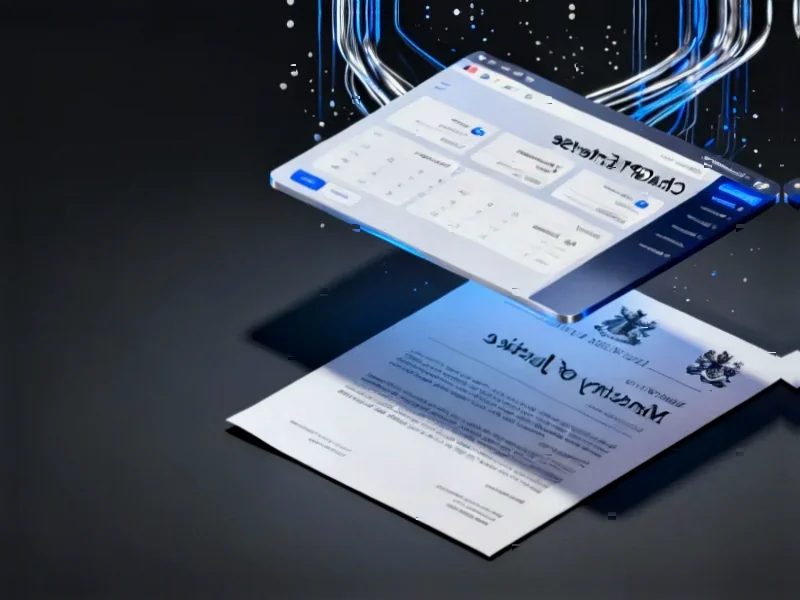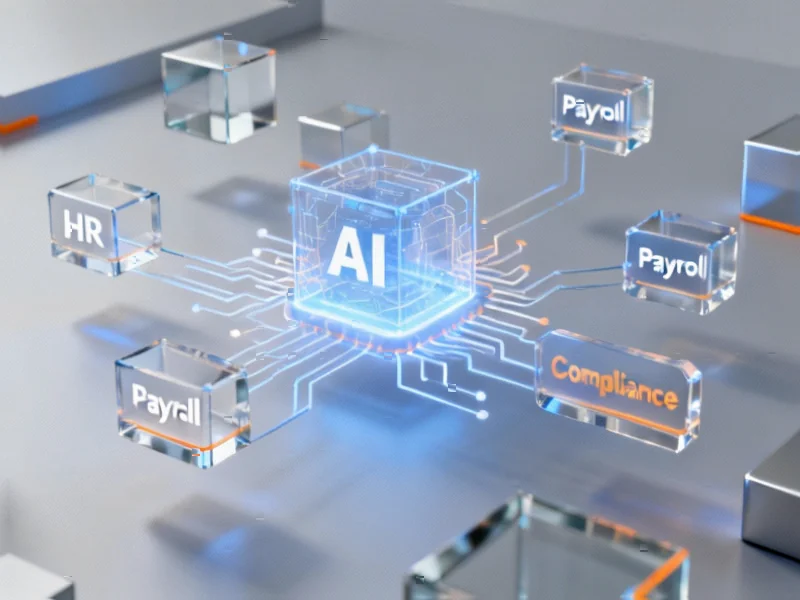In what’s becoming a classic case of technology creating and solving problems simultaneously, corporate finance departments are facing an unprecedented surge in AI-generated expense fraud that’s forcing a fundamental rethink of trust verification systems. The very artificial intelligence tools that promised to streamline business operations are now being weaponized by employees to create near-perfect fake receipts, according to leading expense management platforms.
Table of Contents
The Scale of the Problem
Recent data reveals a startling escalation in AI-assisted expense fraud. Software provider AppZen reports that fake AI receipts accounted for approximately 14% of fraudulent documents submitted in September—a figure that stood at zero just last year. Meanwhile, fintech group Ramp detected over $1 million in fraudulent invoices within just 90 days through its monitoring systems. The timing aligns suspiciously well with the launch of improved image generation models from major AI players, particularly OpenAI’s GPT-4o release earlier this year.
What makes this trend particularly concerning is how quickly it’s gained traction. A Medius survey found that 30% of US and UK financial professionals have observed increased falsified receipts following GPT-4o’s debut. “These receipts have become so good, we tell our customers, ‘do not trust your eyes’,” noted Chris Juneau of SAP Concur, which processes over 80 million compliance checks monthly using AI. That warning from one of the world’s leading expense platforms underscores just how convincing these forgeries have become.
Democratization of Fraud
The fundamental shift here isn’t just in quality—it’s in accessibility. As Mason Wilder, research director at the Association of Certified Fraud Examiners, bluntly stated: “There is zero barrier for entry for people to do this. You don’t need any kind of technological skills or aptitude like you maybe would have needed five years ago using Photoshop.”
This represents a dramatic democratization of fraud capability. Where previously creating convincing fake documents required either advanced photo editing skills or payment to specialized services, employees can now generate realistic receipts in seconds using free, accessible AI tools. The process has become as simple as typing text instructions into a chatbot and receiving a polished, believable receipt complete with wrinkles, detailed itemization matching real menus, and even signatures.
Interestingly, this development mirrors historical patterns where technological advances initially empower malicious actors before defenses catch up. We saw similar dynamics with the advent of desktop publishing enabling counterfeit currency, and later with digital editing tools facilitating document forgery. The difference now is the speed and scale at which these capabilities have become available to ordinary employees.
Detection Arms Race
Unsurprisingly, the surge in sophisticated forgeries has triggered an equally rapid response from detection technology providers. The current approach involves multiple layers of verification, starting with metadata analysis to identify AI-generated images. As OpenAI confirmed to the Financial Times, their images contain metadata signaling ChatGPT creation—though this can be easily removed by taking screenshots or photos of the generated images.
This limitation has forced detection systems to become more sophisticated. “The tech can look at everything with high details of focus and attention that humans, after a period of time, things fall through the cracks, they are human,” explained Calvin Lee, senior director of product management at Ramp. Modern detection now examines contextual clues like repetition in server names, timing inconsistencies, and broader trip information to catch fakes that bypass initial metadata checks.
The irony here is palpable: companies are increasingly relying on AI systems to detect AI-generated forgeries, creating a technological arms race within corporate expense departments. This represents a significant shift from traditional human review processes that simply can’t keep pace with the volume and sophistication of modern forgeries.
Market Impact and Industry Response
The implications for the expense management industry are substantial. Platforms like SAP Concur, AppZen, Ramp, and Rydoo are racing to develop more sophisticated detection capabilities, recognizing that this threat represents both a challenge and business opportunity. As Sebastien Marchon, CEO of Rydoo, warned: “This isn’t a future threat; it’s already happening. While currently only a small percentage of non-compliant receipts are AI-generated, this is only going to grow.”
Research by SAP in July found that nearly 70% of CFOs believe their employees are using AI to falsify expenses, with about 10% certain it’s happening in their organizations. This perception alone is driving increased investment in verification technologies and potentially changing workplace dynamics around expense reporting.
The competitive landscape in expense management software is likely to shift toward platforms that can demonstrate superior fraud detection capabilities. We’re already seeing differentiation based on AI detection effectiveness, with providers highlighting their ability to catch sophisticated forgeries that human reviewers would miss.
Broader Implications
This trend extends beyond mere expense fraud into larger questions about trust verification in the AI era. If employees can so easily generate convincing fake documents for relatively small expense claims, what does this mean for more significant financial transactions, contract verification, or identity documentation?
The situation also raises interesting questions about corporate AI policies. Many companies are encouraging employee AI use for productivity gains while simultaneously fighting AI-assisted fraud. This creates potential policy conflicts that organizations will need to navigate carefully.
From a technological standpoint, we’re witnessing the early stages of what will likely become a persistent pattern: each advance in generative AI capabilities will be followed by corresponding advances in detection technology. This cat-and-mouse dynamic resembles the ongoing battle between cybersecurity measures and hacking techniques, suggesting we’re entering a new era of continuous technological escalation in fraud prevention.
Looking Forward
The rapid emergence of AI-generated expense fraud serves as a cautionary tale about unintended consequences of technological democratization. As AI tools become more accessible and capable, we can expect similar patterns to emerge across other business functions where verification and trust are paramount.
For now, the expense management industry appears to be keeping pace with the threat, but the long-term solution may require more fundamental changes to how we verify transactions and documents. Blockchain verification, biometric authentication, and integrated digital payment systems that bypass paper receipts entirely represent potential future directions.
What’s clear is that the era of trusting visual evidence in expense reporting is rapidly ending. As one industry executive aptly warned: don’t trust your eyes—because increasingly, what you’re seeing isn’t real, even when it looks perfect.



